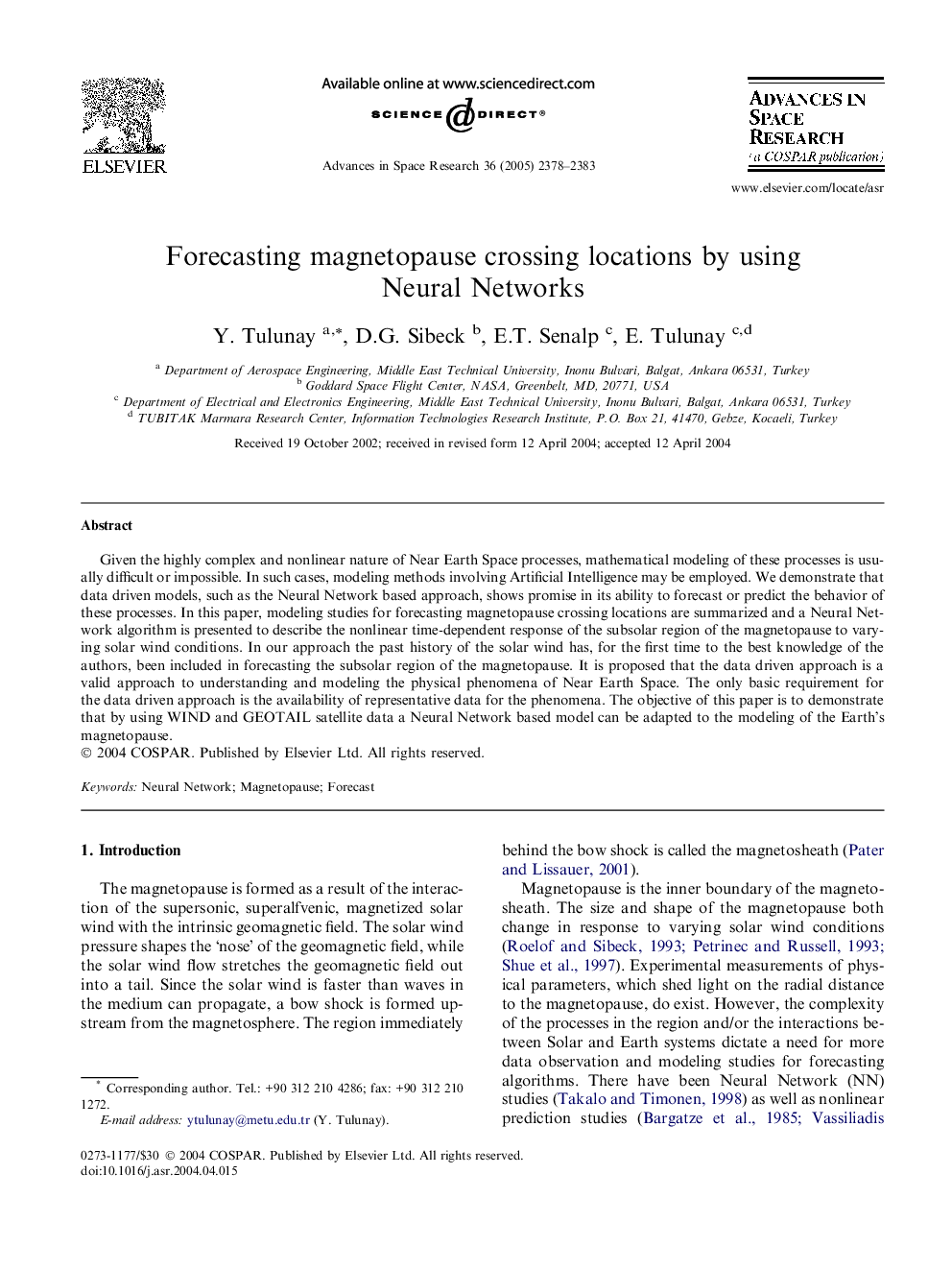| Article ID | Journal | Published Year | Pages | File Type |
|---|---|---|---|---|
| 1768661 | Advances in Space Research | 2005 | 6 Pages |
Given the highly complex and nonlinear nature of Near Earth Space processes, mathematical modeling of these processes is usually difficult or impossible. In such cases, modeling methods involving Artificial Intelligence may be employed. We demonstrate that data driven models, such as the Neural Network based approach, shows promise in its ability to forecast or predict the behavior of these processes. In this paper, modeling studies for forecasting magnetopause crossing locations are summarized and a Neural Network algorithm is presented to describe the nonlinear time-dependent response of the subsolar region of the magnetopause to varying solar wind conditions. In our approach the past history of the solar wind has, for the first time to the best knowledge of the authors, been included in forecasting the subsolar region of the magnetopause. It is proposed that the data driven approach is a valid approach to understanding and modeling the physical phenomena of Near Earth Space. The only basic requirement for the data driven approach is the availability of representative data for the phenomena. The objective of this paper is to demonstrate that by using WIND and GEOTAIL satellite data a Neural Network based model can be adapted to the modeling of the Earth’s magnetopause.
